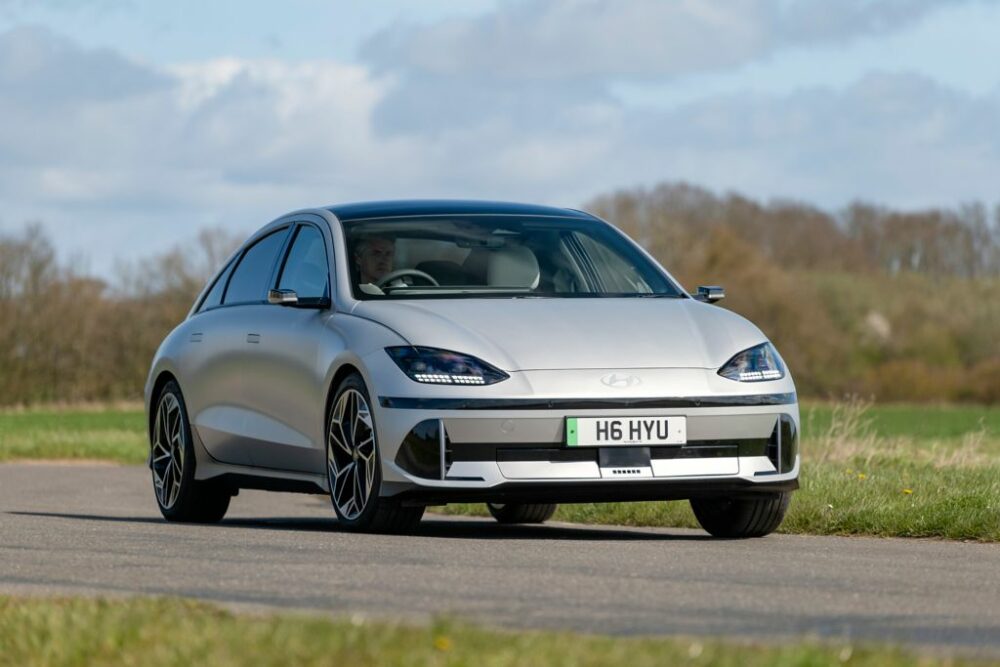Launch Report: BYD Atto 3 is a strong Chinese contender in Europe
11 October 2023

BYD is the world’s largest electric vehicle (EV) brand in terms of registrations, thanks in part to its domestic dominance in China. The carmaker is looking to increase its global presence and has landed in Europe with its Atto 3 compact SUV.
Spearheading the carmaker’s entry into the mainstream European automotive sector, the Atto 3 is an important vehicle for BYD. As the company looks to build recognition, it will rely on the compact SUV to appeal to customers and take market share away from more established brands.
Autovista Group experts from Austria, France, Spain, and the UK analysed the model in their respective markets. The car’s strengths, weaknesses, opportunities, and threats were benchmarked against key rivals, with new-price points outlined alongside forecast residual values (RVs). Click on the image below to view these insights in the latest dashboard.
Conservative appeal
The Atto 3 looks immediately suited to the continent’s roads. It is only being offered as a battery-electric vehicle (BEV) and the design takes familiar cues from other all-electric models.
There is no front grill, while flat alloy wheels and sleek lines, including a channel down each side, will assist aerodynamics, reducing drag and adding crucial mileage to the range, albeit in low amounts. It is a conservative look, which may well appeal to those customers who do not want the bold styles of other available electric SUVs.
The aerodynamic design flows through to the interior, which is the opposite of the car’s conventional exterior. The floating centre console houses the transmission switch, a twist-grip lever designed to look like the throttle of a jet plane. The central vent is styled like the flap dials of a standard cockpit too. The console includes all the control buttons for functions like the stop/start system, air conditioning, blind spot detection and more. But they are very plastic looking, and not particularly pleasing to the eye.
Above this sits the interior’s key feature, a flatscreen infotainment display, at 12.8 or 15.6-inches depending on trim level. This can be presented either horizontally or vertically, moving between the two at the tap of a button. Options lists or charging station choices can be seen in full in one orientation, while maps are available in the wide-screen format.
Continuing the aerodynamic theme, the cabin is awash with swooping lines carved into plastic surfaces, mimicking the movement of air and providing a dynamic approach to the interior. The swoops do feel a bit dramatic in places, such as around the passenger-side dashboard which looks melted, rather than styled. Another nice touch is the guitar strings on the front doors, extending from the speakers and allowing for bigger items, such as drinks bottles, to be held securely in place.

Rear passengers have decent headroom, thanks to the high roofline of the compact SUV, while the lack of a central tunnel aids rear legroom and allows for three people to be seated in the back. The boot has 440-litres of space, enough for a couple of suitcases. The Atto 3 does not feature a frunk, meaning charging cables have to be carried in the boot.
Safety first
On the road, the Atto 3 is comfortable to drive, with the soft suspension soaking up the bumps of urban roads, while the steering is precise at low speeds. On twisty country roads, where more braking and accelerating are required, the suspension does tend to wallow, with the nose pitching and diving at times. The 1.7-tonne vehicle is powered by a single electric motor, providing 201bhp and 310Nm of torque, propelling the car from 0-100kph in 7.3 seconds, with a top speed of 160kph.
BYD uses a 60.5kWh lithium-ion phosphate (LFP) battery. This LFP unit offers a longer service life than traditional lithium-ion units, with more charging cycles available and a lower risk of fire, something that is ideal for a family car. This does limit its charging prowess, however. The LFP battery on the Atto 3 is set to a maximum DC charging capacity of 88kWh, meaning a 10% to 80% charge takes 45 minutes, around 15 minutes longer than some of its competitors.
Building brand recognition
While many reports suggest that Chinese brands are entering Europe to offer cheaper alternatives to existing BEV options, BYD has not priced the Atto 3 as a budget model. Depending on the market, the car is comparatively priced with the Hyundai Kona, Kia Nero or Renault Megane, and it is more expensive than the MG ZS EV, which has built itself as a budget option under SAIC’s ownership. This gives BYD an opportunity to offer genuine competition to other brands already established in Europe and to project the quality of the Atto 3.
The model has the backing of a company that has plenty of experience in the EV market. Founded in 1995, BYD has been supplying batteries to the automotive market for years, and has now taken this knowledge of electric systems and transitioned into vehicle production. BYD builds everything from forklifts to buses, so is not new to automotive development.
Yet while the carmaker is well known in China, expanding into Europe means establishing its brand image, as being an unknown quantity could hamper sales. This is something SAIC considered when it first entered the market, using the recognisable MG name to bypass the need to build recognition. As a mainstream model, therefore, the Atto 3 is a very important car to BYD.
Overall, the BYD Atto 3 is a comfortable vehicle that will appeal to the mass market, providing a conservative design on the outside that masks the stylish aerodynamic swoops of the interior. It pitches itself against its competitors with the offer of safer BEV driving and is a good start for a carmaker that is aiming to build a place for itself in a region dominated by well-established brands.
View the Autovista Group dashboard, which benchmarks the new Atto 3 in Austria, France, Spain, and the UK for more details. The interactive launch report presents new prices, forecast residual values, and SWOT (strengths, weaknesses, opportunities, and threats) analysis.




